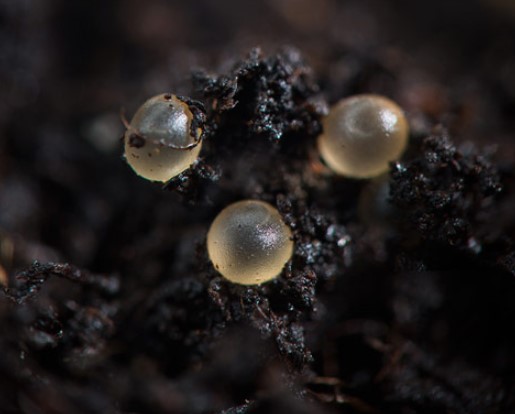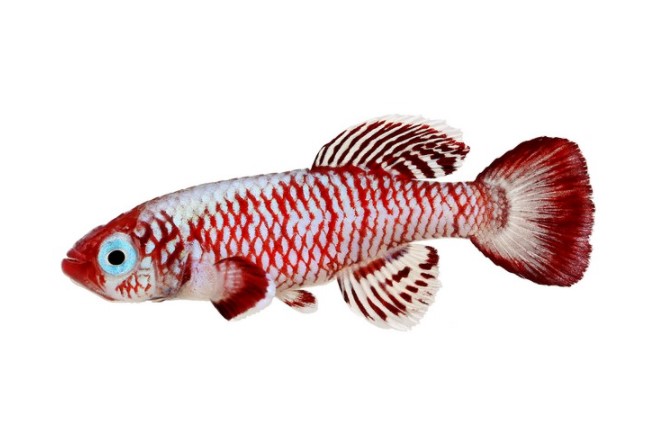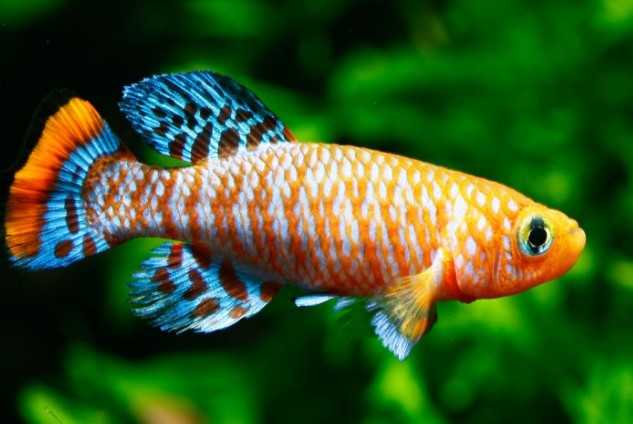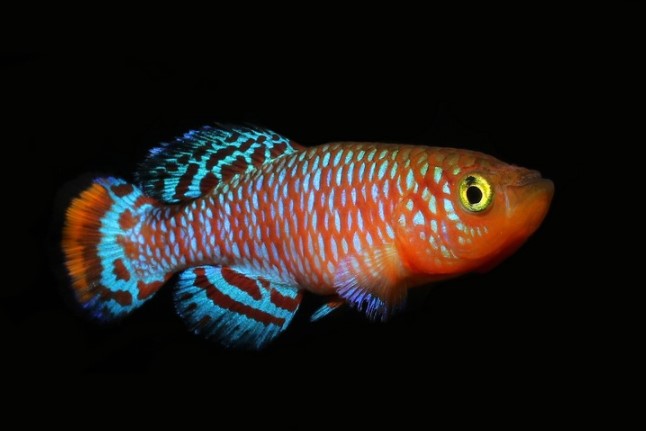Killifish is a truly amazing fish, which is distinguished not only by the beauty of its color, reminiscent of the pattern of an orchid flower but also by its unusual life cycle, closely associated with regular drought and the rainy season.
General Information
A Killifish is a group of fish from the Karpodiformes order. Their main feature is an unusual life cycle, evolutionarily associated with the arrival of the rainy season. For this, they received the name seasonal fish.
As soon as the first drops of rain begin to fall on the territory of tropical Africa after a long dry period, then in almost every puddle filled with water, beautiful fish immediately appear, which grow very quickly and begin to reproduce in a couple of months. They need to lay eggs as soon as possible until the life-giving moisture disappears again. Killifish eggs are very strong and capable of being in a state of diapause, or hibernation, for a long time. In this form, they can do without water from six months to a year. The duration depends on the humidity and temperature in the surrounding air. With the arrival of the rainy season, fry hatch again from the eggs, and the cycle repeats.
Unfortunately, this evolutionary adaptation also has a certain disadvantage for aquarists – these fish do not live in the aquarium for more than a year. But even despite this, bright fish do not lose their popularity at all and have been decorating aquariums around the world for more than 100 years.
According to estimates by various scientists, the genus includes from 30 to 60 species. This range is due to the wide variety of color morphs that live in nature. It is possible that interspecific hybrids may also be found on sale. Almost every year, new fish appear on the market, which are either color variations of already known species, or new, undescribed species. Some of them, by analogy with the Loricarius Catfish, are assigned numbers, for example, U-5.
Appearance
Killifish are some of the most beautiful aquarium fish. They have a proportional oval body. Males grow up to 8-10 cm, females are slightly smaller. The anal and dorsal fins are of almost the same length and are displaced towards the caudal and have a rounded shape. The caudal fin is fan-shaped with a powerful fan-shaped base.
The color of fish (especially males) is very diverse and consists of amazing color combinations. The main body color is usually blue, green, or reddish with numerous dark stripes and dots. The caudal fin is decorated with borders in black, red, blue, orange, and yellow.
Females are much more modestly colored – they have a gray-brown body without shine and a border on their fins.
Life expectancy in an aquarium does not exceed 1 year.
Habitat
Various types of Killifish are widespread throughout Africa. They can be found from Sudan to Zimbabwe. At the same time, in some species, the range is limited to only a few kilometers, while other species are found almost everywhere.
More than a third of Killifish species live in Tanzania, which for a long time was the main supplier of fish to Europe and other countries. The great color diversity of Killifish in nature is explained by the fact that the fish live mostly in hard-to-reach places in small isolated reservoirs, forming local populations that differ in color.
A typical biotope Killifish is a small, non-flowing body of water. Usually, it is just a puddle or ditch in the floodplain of the river, which has no connection with it and is filled with water only during the rainy season.
The bottom of the reservoirs is a loose silty-sandy substrate with a large amount of organic matter, due to which the water is rich in humic substances and has an acidic reaction.
Such bodies of water are often attracted by a large number of animals, which not only quench their thirst but also cool down in the water. As a result, the content of nitrogenous compounds exceeds all permissible norms, however, Killifish live and reproduce even in such extreme conditions.
Care and Keeping
Killifish– fish are rather unpretentious in terms of keeping conditions. Keeping a small group of these fish doesn’t require a large aquarium. For a group of a male and a pair of females, 40 liters will be enough. Dark sand or small pebbles are used as soil. Natural driftwood and stones will be a reliable shelter. Killifish do not like bright light, so it is better to dim it by using plants floating on the surface. From other plants, it is better to choose shade-tolerant species: Javanese moss, fern, some types of Cryptocoryne. The aquarium should be equipped with a filter, but a strong current, to which the fish are not accustomed, should not be created.
Serious attention should be paid to water quality. Ideally, it should be very soft, but practice shows that fish adapt well to life in harder water.
Optimum water parameters for the content: T = 20-23 ° C, pH = 6.5-7, GH = 5-20.
The water temperature in the aquarium should not go far beyond the above limits: at lower values, the males lose their bright color, and a higher one shortens their life.
Caring for a Killifish is no different from caring for other fish. Regular water changes up to 30% of the aquarium volume are required.
Feeding
In nature, Killifish feed on numerous insects and their larvae that fall to the surface of the water. A more comfortable grip of food is facilitated by an upward mouth. When kept in an aquarium, many people practice feeding fish with live and frozen food. However, they do not fully provide the fish with nutrients, and they can also be potential sources of infection.
Therefore, the ideal choice for feeding fish will be high-quality dry food, completely devoid of the disadvantages of living and frozen. The most suitable form of food will be flakes and chips floating on the surface.
Due to its active metabolism, Killifish should not be left without food even for several days. It is best to feed them twice a day in small portions, which the fish will completely eat in a couple of minutes.


There are a lot of mistakes in the article.
“Killifish is a truly amazing fish, which is distinguished not only by the beauty of its color, reminiscent of the pattern of an orchid flower but also by its unusual life cycle, closely associated with regular drought and the rainy season.”
There are hundreds of specis of killifish, most of them are not annuals.
“A Killifish is a group of fish from the Karpodiformes order.”
Killifish are egg laying members of the Cyprinodontiformes order
“As soon as the first drops of rain begin to fall on the territory of tropical Africa after a long dry period, then in almost every puddle filled with water, beautiful fish immediately appear, which grow very quickly and begin to reproduce in a couple of months.”
Killifish are found all across in world, in every continent other than Austrailia and Antartica. The annuals are found in Africa and South America only. Africa and South America is also home to nonannuals.
“these fish do not live in the aquarium for more than a year.”
I have nonannuals live 3 years and counting. Annuals can sometimes live mroe than a year in captivity.
“According to estimates by various scientists, the genus includes from 30 to 60 species”
Which genus? Nothobranchius which are pictured is a genus with 75 to 76 members.
“Males grow up to 8-10 cm, females are slightly smaller.”
There are hundreds of species, some are bigger and some are smaller.
“Various types of Killifish are widespread throughout Africa. They can be found from Sudan to Zimbabwe.”
Dont forget about the nonannuals in Cameroon, Nigeria, etc
“More than a third of Killifish species live in Tanzania”
Not they don’t. There are more in western africa
“Killifish– fish are rather unpretentious in terms of keeping conditions. Keeping a small group of these fish doesn’t require a large aquarium. For a group of a male and a pair of females, 40 liters will be enough.”
Not a good idea for the bigger species like Tanichthys lamprichthys.
“Optimum water parameters for the content: T = 20-23 ° C, pH = 6.5-7, GH = 5-20.”
For which species of killifish?